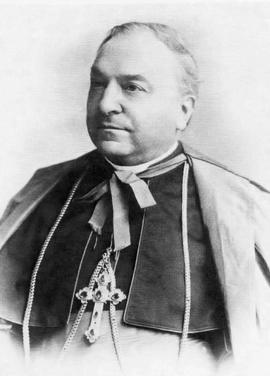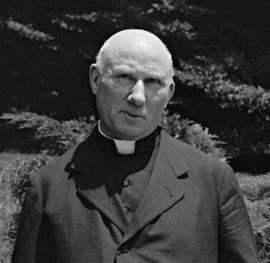Showing 277 results
Authority recordSacred Congregation of Religious
- CongR
- Corporate body
- 1587-2023
https://www.newadvent.org/cathen/13136a.htm
Sixtus V first erected by a Brief of 17 May, 1586, and afterwards, by the Constitution "Immensa", confirmed, a congregation "super consultationibus regularium" distinct from the congregation "super consultationibus episcoporum et aliorum prælatorum" mentioned in the same Constitution. In 1601 these two congregations were already combined in the Congregation of Bishops and Regulars, to which, in course of time, were united three other congregations whose functions were closely related. These three were: the Congregation on the State of Religious (super statu regularium), created by Innocent X on 15 August, 1652, for the reformation of regulars in Italy, and suppressed by Innocent XII on 4 August, 1698; the Congregation on Regular Discipline (super disciplina regulari), instituted by Innocent XII on 18 July, 1695, for the reformation of regulars not only in Italy but throughout the whole world; the Congregation on the State of the Regular Orders (super statu regularium ordinum), created by Pius IX on 17 June, 1847. The last-named and the one on regular discipline were suppressed by Pius X, by the Motu Proprio of 26 May, 1906, which united these congregations with that of Bishops and Regulars. The new Constitution of Pius X abolishes the Congregation of Regulars and Bishops and transfers that part of its business which concerns bishops to the Congregation of the Council, and that part of it which concerns regulars to a congregation (oongregatio negotiis religiosorum sodalium præposita) created by the new Constitution, and which by common usage sanctioned by the legend on the official seal of the congregation, has received the name of Congregatio of Religious.
This body has the usual organization of the Roman Congregations. It is formed of several cardinals, who are chosen by the pope, and one of whom is the prefect of the congregation; these cardinals are assisted by a secretary and a sub-secretary, who are the major officials of the congregation, and by several minor officials. In regard to the latter it is to be noted that, as the amount of its business necessitates a division of the congregation into three parts (as in the case of the Congregation of the Sacraments), the highest dignitaries among the minor officials are the three assistants who are placed over the three sections. One of these sections has to deal with matters relating to religious orders; another, with the business of religious congregations or associations of men, of whatever nature those associations may be; the third, with business relating to congregations of women. This congregation also has a college of consultors.
The Constitution of Pius X clearly defines the competency of this congregation, which is to pass judgment upon all matters relating to religious persons of either sex, whether bound by solemn or by simple vows, or to those persons who, although they be not religious in the canonical sense of the word, live as religious — such as the oblates of certain communities of men or of women, who, without being bound by vows, live a common life under an approved rule. The third orders, consisting of seculars, are also under this congregation. It decides in litigations between members of religious orders, or between religious and bishops, and it is the competent tribunal in eases which have to be dealt with in the way of discipline (in via disciplinari) where a religious appears either as plaintiff or as defendant. Hence it is to be inferred, and indeed is expressly stated in the Constitution, that causes which have to be dealt with in the judicial way must be referred to the Rota, the rights of the Holy Office being always safeguarded. Finally, all common law dispensations to regulars pertain to this congregation, excepting dispensation from the Eucharistic fast, which, as said above, pertains to the Congregation of the Sacraments. The Congregatio of Religious is alone competent to approve new religions institutes and their constitutions, as well as to modify institutes already approved, and these being matters of grave importance, the full congregation deals with them.
- GSP
- Person
- 1852-1934
Pietro Gasparri, GCTE (5 May 1852 – 18 November 1934) was a Roman Catholic cardinal, diplomat and politician in the Roman Curia and the signatory of the Lateran Pacts. He served also as Cardinal Secretary of State under Popes Benedict XV and Pope Pius XI. - Wikipedia https://en.wikipedia.org/wiki/Pietro_Gasparri
- IE/PFB
- Person
- 1872-1960
Pietro Fumasoni Biondi (4 September 1872 – 12 July 1960) was an Italian Cardinal of the Roman Catholic Church who served as Prefect of the Sacred Congregation for the Propagation of the Faith in the Roman Curia from 1933 until his death, and was elevated to the cardinalate in 1933.
Fumasoni Biondi was born in Rome to the aristocratic Filippo and Gertrude (née Roselli) Fumasoni Biondi; he had a sister who entered the Missionary Sisters of the Sacred Heart of Jesus and became known as Mother Gertrude.[1] After studying at the Pontifical Roman Seminary, he was ordained to the priesthood by Cardinal Lucido Parocchi on 17 April 1897. From 1897 to 1916, he was a professor at the Pontifical Urbaniana University and then an official of the Sacred Congregation for the Propagation of the Faith.
On 14 November 1916, Biondi was appointed Apostolic Delegate to the East Indies[2] and Titular Archbishop of Dioclea. He received his episcopal consecration on the following 10 December from Cardinal Domenico Serafini, OSB, with Bishops Joseph Legrand, CSC, and Agostino Zampini, OSA, serving as co-consecrators, in the chapel of the Urbaniana University. In this post, he actively tried to improve relations between the Vatican and the Emperor of Japan.[3] Biondi was later named Apostolic Delegate to Japan on 6 December 1919, Secretary of the Congregation for the Propagation of the Faith on 14 June 1921 and Apostolic Delegate to the United States on 14 December 1922. In 1927, he declared the Vatican had no interest in the presidential campaign of Al Smith, the Catholic governor of New York.[1]
Pope Pius XI created him Cardinal-Priest of Santa Croce in Gerusalemme in the consistory of 13 March 1933, in advance for his appointment as Prefect of the Sacred Congregation for the Propagation of the Faith three days later, on 16 March. Cardinal Fumasoni Bondi served as papal legate to the National Eucharistic Congress in Teramo on 20 August 1935. He was one of the cardinal electors who participated in the 1939 papal conclave, and again in the conclave of 1958.
Biondi died in Rome, at age 87. He is buried in the Campo Verano.
Cantillon, Berchmans, 1880-1942, Capuchin priest
- IE CA DB/44
- Person
- 20 June 1880-12 March 1942
Francis Cantillon was born near the village of Glounthaune in County Cork on 20 June 1880. He attended the local diocesan seminary for several years, but after some discernment entered the Capuchin novitiate in September 1899. Having completed his philosophical and theological studies, he was ordained on 16 March 1907. In 1910 he was appointed guardian (local superior) of the Capuchin friary in Kilkenny. Following the completion of his term as guardian, he engaged in the ministry of preaching missions and retreats throughout Ireland. He was transferred to the United States in 1926 and took up residence in Mendocino County in California. Later that year he assisted Fr. Thomas Dowling OFM Cap. in ministering in Visitation Valley near San Francisco. This assignment was a temporary one as within a few months the Irish friars were given the administration of the new parish of Our Lady of Angels in Burlingame, California. They resided there in a small house on Cortez Avenue. In 1931 Fr. Berchmans was appointed Pastor of Our Lady of Angels parish in Ukiah, a position he filled until 1937 when he took up the position of pastor of the church of St. Francis of Assisi in Bend, Oregon. His health began to decline in subsequent years, and he retired from active ministry in 1940. He moved to Los Angeles and died there on 12 March 1942. He was laid to rest in the Capuchin plot in Calvary Cemetery in Los Angeles.
Baptismal name: Francis Cantillon
Religious name: Fr. Berchmans Cantillon OFM Cap.
Date of birth: 20 June 1880
Place of birth: Rockfarm, Glounthaune, County Cork
Name of father: Denis Cantillon
Name of mother: Mary Ellen Cantillon (née Mahony)
Date of reception into the Capuchin Order: 8 Sept. 1899
Date of first profession: 8 Sept. 1900
Date of final profession: 25 Sept. 1904
Date of ordination (as priest): 16 Mar. 1907
Educational attainments: BA (RUI)
Missionary assignments: Travelled to Los Angeles, California, in 1926
Date of Death: 12 March 1942
Place of death: Queen of Angels Hospital, Los Angeles, California, United States
Place of burial: Calvary Cemetery, Los Angeles, California, United States




